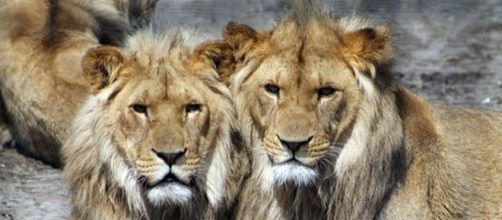Lionshave been foundbutcheredfor theirbonesafter falling victim to a mass poisoning inLimpopo Park, in Mozambique. The Limpopo Park is adjacent to South Africa's famous Kruger National Park and forms part of the massive transfrontier wilderness area dubbed the Great Limpopo Transfrontier Park. The dead lions are ablowto the park as Peace Parks explained on their Website that one of the top priorities was to focus on "sharing the benefits of Great Limpopo with those living in the surrounding area." Despite the management board implementing a strategy to encourage livelihood diversification with local residents, it seems theAsian demand for Lion bonescontinues to motivate poachers to target lions.
Lions and vultures used for traditional medicines
As efforts are currently being made toaddress the poisoning of elephants, lions and vultures in the area, the deliberate mass killings are disheartening. The poison also killed Animals that poachers for the commercial wildlife trade seem to have no use for. The dead warthogs, nyala and impala were left to rot, along with fish eagles and kites. The dead which were targeted for their commercial value were two lions and 22 vultures. The lions were dismembered for their bones, while the vultures had their heads removed. The vulture heads are used in traditional medicine treatments in Southern Africa. Tim Snow,CEO & Founder of Wildlife Poisoning Prevention and Conflict Resolution, said in a Facebook post that vultures in Africa "are in trouble," as they are often victims of random posioning.
The fact that vultures can be early indicators of poaching activity means that the hunters will not hesitiate todestroy the birds.
The failure of CITES for protect lions
Don Pinnock, a leading conservation journalist wrote in his article for Earth Touch that the President for the Born free Foundation called the incident a "sad day." This is more so as the recent CITES convention in South Africa failed to upgrade lions from AppendixII, and allowed the trade of captive lion bones.
There is no way to distinguish between wild poached lion bones and lion bones that come from canned hunting outfits.
Brazen lion poachers
At 37 572km² the total area of the transfrontier Park, which includes conserved land in Zimbabwe, amounts to nearly the size of the Netherlands, and thanks to grants from Germany, the Mozambique Park has seen anti-poaching units operating and improvements to fencing and infrastructure.
It is almost impossible to police the entire area, but the brazen attitude of the poachers is illustrated by the fact that the animals were poisoned and butchered a mere two kilometres away from theMachampane tourist camp.
Increasing lion bones demand
According to Africa Geographic, the first reported news of lions killed specifically to supply the Asian demand for lion bones was in 2009. They were identified as being used as an alternative to tiger bones in South East Asia. The slaughter of lions for their bones has increased since then, and Speak Up For The Voiceless, an international animal rescue foundation explains that this is because the tigers have been hunted almost to extinction in Asian countries where there is a high demand for bone wine.
Big cat bone wine is said to cure "impotency, loss of sex drive, headaches, migraine, cancer,...diabetes and arthritis."
Lion bones cure nothing, but as the world is very aware, the insatiable appetite in Asia for wild animal parts in traditional medicine, and as status symbols, have driven the rhino to the brink of extinction and is endangering Africa’s elephant herds. Now they are providing a market for lion bones, the slaughter of Africa's wildlife is accelerating.

